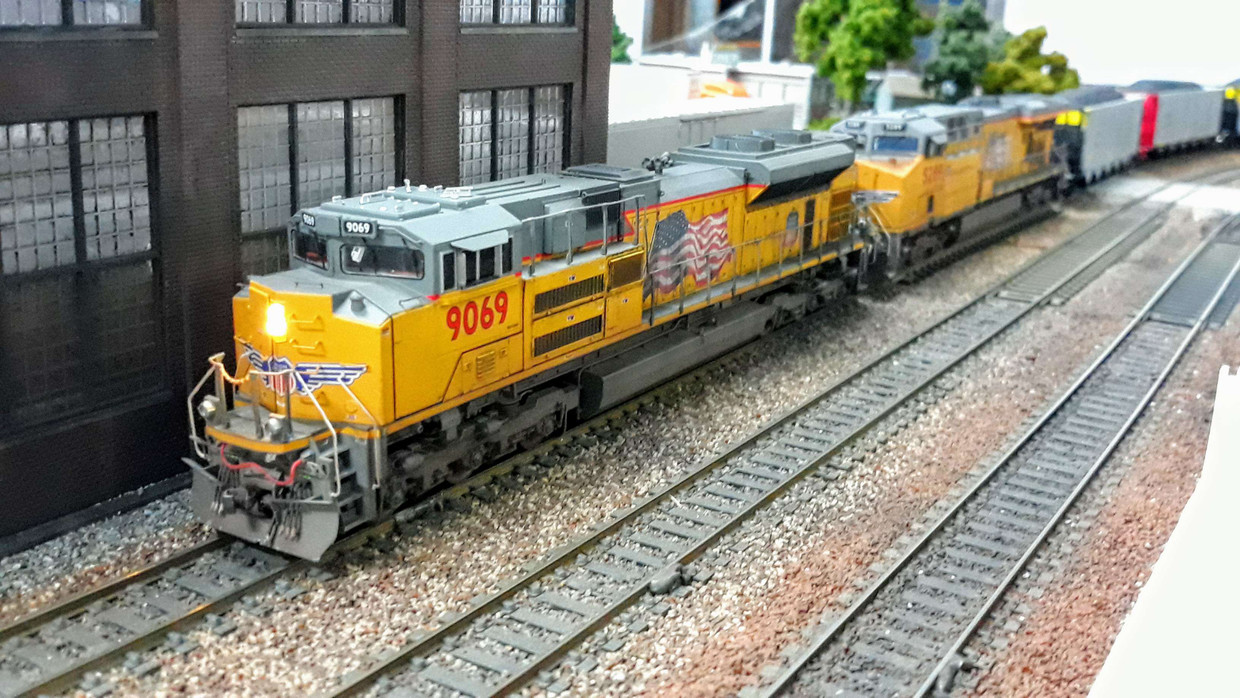Model Railroad Terminology
Welcome to the model railroad terminology glossary, a comprehensive guide to the language and concepts used in the captivating world of model railroading. Whether you're a beginner setting up your first layout or an experienced hobbyist looking to expand your knowledge, understanding the terminology is essential for navigating the intricacies of this beloved hobby. From scales and gauges to control systems and scenery, this glossary covers a wide range of terms that will help you communicate effectively, troubleshoot issues, and enhance your enjoyment of model railroading. Whether you're exploring different scales, learning about digital command control (DCC) systems, or diving into the art of weathering, this glossary is your go-to resource for unraveling the fascinating world of model trains and layouts.
- Scale: The ratio of the model's dimensions to the dimensions of the real-life prototype. Common scales include HO (1:87), N (1:160), O (1:48), and G (1:22.5).
- Gauge: The distance between the rails on a model track. Common gauges include HO (16.5mm), N (9mm), O (32mm), and G (45mm).
- Track: The rails and ties upon which the model trains run. Tracks can be made of various materials including brass, nickel-silver, and plastic.
- Turnout / Switches / Points: A track switch that allows trains to change tracks.
- Mainline: The primary track on a model railroad layout where trains run continuously.
- Sidings: Additional tracks branching off the mainline used for parking or storing trains.
- Yard: A section of the layout dedicated to storing, sorting, and assembling trains.
- Layout: The overall design and arrangement of tracks, scenery, and structures on a model railroad.
- Scenery: The decorative elements added to a model railroad layout to represent real-world landscapes, including hills, trees, water features, and buildings.
- Backdrop: A painted or printed background used to create a sense of depth and realism in a model railroad layout.
- DCC (Digital Command Control): A system that allows modelers to control multiple trains independently on the same track using digital signals.
- DC (Direct Current): A traditional method of powering model trains where the voltage and polarity determine the speed and direction of the trains.
- Decoder: A small electronic device installed in a model locomotive to receive digital commands from a DCC system and control its speed, direction, lights, and sound.
- Rolling Stock: The cars and locomotives that make up a model train consist.
- Consist: A group of rolling stock that is coupled together and pulled by a locomotive.
- Couplers: The devices used to connect rolling stock together. Common types include knuckle couplers and hook-and-loop couplers.
- Weathering: The process of adding realistic wear and tear to model trains and structures to simulate the effects of age, use, and weather.
- Turntable: A rotating track used to turn locomotives or change their direction.
- Roundhouse: A building with several tracks arranged in a circular or semi-circular layout used for storing, servicing, and maintaining locomotives.
- Module: A standardized section of a model railroad layout designed to be connected to other modules to create a larger layout.
- Control Panel: A board or panel with switches and indicators used to control track switches, signals, and other layout features.
- Prototype: The real-world train or railroad that a model railroad layout is based on.
- Kitbashing: The process of modifying or combining commercial model railroad kits to create custom structures or rolling stock.
- Scratchbuilding: The process of building model railroad structures or rolling stock from raw materials rather than using commercial kits.
- Digital Sound System: A system that adds realistic sound effects to model locomotives, including engine sounds, horn blasts, and bell ringing.
- Rail Joiners: Small metal connectors used to join sections of track together, ensuring electrical continuity and proper alignment.
- Power Supply: The source of electrical power for the model railroad layout, supplying energy to the tracks for locomotive operation and accessories.
- Power Pack: A device used to control the voltage and direction of the electrical current supplied to the tracks, controlling the speed and direction of locomotives in DC systems.
- Throttle: A handheld device or control panel used by model railroaders to adjust the speed and direction of locomotives on a layout, especially in DC systems.
- Command Station: In a DCC system, the central unit that sends digital commands to the decoders in locomotives and accessories, allowing precise control over multiple trains.
- Booster: A device used in DCC systems to amplify the digital control signals from the command station, allowing for larger layouts with more trains and accessories.
- Road Name: The name or logo of the real-world railroad company that a model train represents.
- Road Number: The unique identification number assigned to a specific locomotive or piece of rolling stock within a railroad company's fleet.
Recent Posts
-
Prototype Spotlight: GE ES44AC — Modeling a Modern Freight Workhorse
Prototype Spotlight: GE ES44AC — Modeling a Modern Freight Workhorse Published 2025-09-29• 8–10 min
-
How to Build a Realistic Freight Yard: Flow, Trackwork, and Car Management
How to Build a Realistic Freight Yard: Flow, Trackwork, and Car Management Published 2025-09-25 • 8
-
Scenery Basics: From Foam to Foliage — A Quick, Budget-Friendly Guide | Midwest Model Railroad
Modeling Tutorial Scenery Basics: From Foam to Foliage Published 2025-09-23 · 7–9 minute read Li




